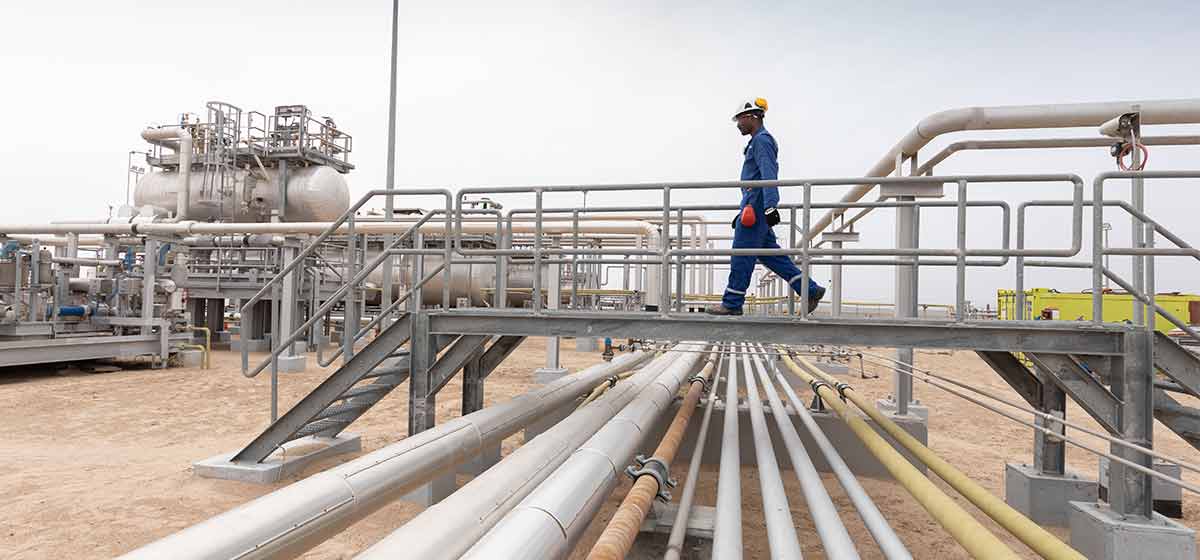SELECT S
Hydrogen sulfide removal adsorbent
Mixed-metal-oxides-based adsorbents to remove harmful H2S from liquid and dry and water-saturated gas streams.
Natural gas sweetening via H2S, H2O, and bulk CO2 removal

Reduces CO2e emissions compared with cellulose acetate membranes by enhancing methane (CH4) retention and enabling carbon capture and sequestration (CCS) or enhanced oil recovery (EOR) because of the higher-purity CO2 permeate
Apura® gas separation membranes are used in natural gas processing plant membrane systems with high-partial-pressure CO2, limited upstream gas dehydration, or both. They sweeten feed gas at pressures up to 1,200 psi [83 bar] and temperatures up to 140 degF [60 degC] via separation of CO2, H2S, and H2O from methane.

The extremely robust, spiral-wound, multilayer composite membranes enable natural gas treatment facility operators to
Apura membranes enable separation of a high-purity CO2 permeate gas stream, which increases the potential for operators to pursue CCS. In cases where the permeate gas must be incinerated or flared, replacing traditional cellulose acetate spiral-wound membranes with Apura membranes has been proved to reduce Scope 1 emissions by 50%–60%. Capturing and reinjecting the CO2 into the subsurface as part of a CCS or EOR program boosts emissions reduction even further.
These membranes have demonstrated superior selectivity and resilience in processes with high-partial-pressure CO2, limited upstream gas dehydration, or both, enabling greater CO2 removal efficiency and higher CH4 retention—an important benefit because CH4 is a much more potent greenhouse gas than CO2.
The membrane separation technology has been operationalized in packaging that enables simple plug-and-play replacement of cellulose acetate and polyimide spiral-wound membranes without infrastructure modifications. With an extended life in water-rich conditions, Apura membranes are ideal for natural gas sweetening processes with varying levels of upstream gas dehydration, high-partial-pressure CO2, or both—conditions that are unsuitable for some polymeric membranes. Membrane elements are designed to fit in 8-in and 8 1/4-in tubes built to ASME B31.3 specifications.
The Apura membrane, developed by FUJIFILM and operationalized in collaboration with SLB, leverages FUJIFILM’s illustrious history in organic chemistry, thin film coating, and manufacturing excellence. The result is a gas sweetening membrane with extremely stable performance and high CO2 versus hydrocarbon selectivity.

Case Study
Apura membranes reduce flaring and provide durable solution for acid gas removal with flexibility to handle higher throughput.
Read Case StudyAs a natural gas mixture at high pressure enters the acid gas removal system, it encounters the permeable and selective membrane surface. Inside the central perforated tube around which the membrane material is wrapped, the operating pressure is lower. The pressure differential across the membrane material drives contaminants—such as CO2, H2S, and H2O—present in the natural gas across the membrane via selective permeation; most of the methane is preferentially retained.
Several polymeric membrane technologies exhibit this behavior, but FUJIFILM’s manufacturing excellence differentiates Apura membranes, which maintain their selectivity even in water-rich environments and after exposure to pressurization events inherent to production startups and shutdowns.

Apura is a registered trademark of FUJIFILM Corporation, used with permission.

Apura gas separation membrane is part of our Transition Technologies portfolio. Learn about our collaborative approach and full field development solutions that drive high performance while reducing environmental impact throughout the life of your asset.
Read More